By: Maddie Mott
Wound healing (healing hand therapy) involves a complex series of interactions between different cell types, cytokine mediators, and the extracellular matrix with its four basic stages including hemostasis, inflammation, proliferation, and remodeling (Mackay & Miller, 2003). Because successful wound healing requires adequate blood and nutrients to be supplied to the site of damage, the overall health and nutritional status of our patients directly influence the outcomes of their tissues healing or their tissues becoming permanently damaged. Wound repair must occur in a physiologic environment that supports tissue repair with studies showing that a diet deficient in protein, vitamins, and minerals can lead to poor wound healing (Mackay & Miller, 2003). Additionally, studies have found that maintaining an adequate intake of protein is especially important as it is used to build, maintain, and repair body tissues (Cleveland Clinic, 2017).
As healthcare practitioners, it is important that we recognize when someone has a wound or an infection that they will need additional protein, calories, and nutrients. We must also know relevant food sources which provide those nutrients. In a nutshell, healthy eating for wound healing includes choosing a wide variety of foods from each of the five food groups, consuming additional protein, and increasing energy intake (National Institutes of Health, n.d.). Some strategies to increase protein intake are by incorporating protein foods at each meal and as snacks. Furthermore, the amount of energy the body needs can increase when someone has a wound. Some strategies to increase energy levels could include keeping ready-to-eat meals and snacks handy at all times, eating smaller but more frequent meals throughout the day, and drinking fluids that provide energy such as milk, juice, or soft drinks rather than tea, coffee, and water (National Institutes of Health, n.d.).
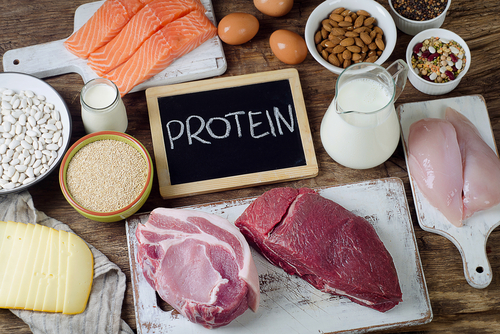
High Protein Foods Include:
• Meat, fish and chicken
• Eggs
• Dairy products (milk, cheese, yogurt)
• Beans, legumes, nuts and seeds
• Meat alternatives (tofu, vegetarian sausages)
You May Need Extra Energy If:
• You are underweight or you are losing weight without trying
• You are unable to eat enough due poor appetite or nausea
• You are recovering from trauma or surgery
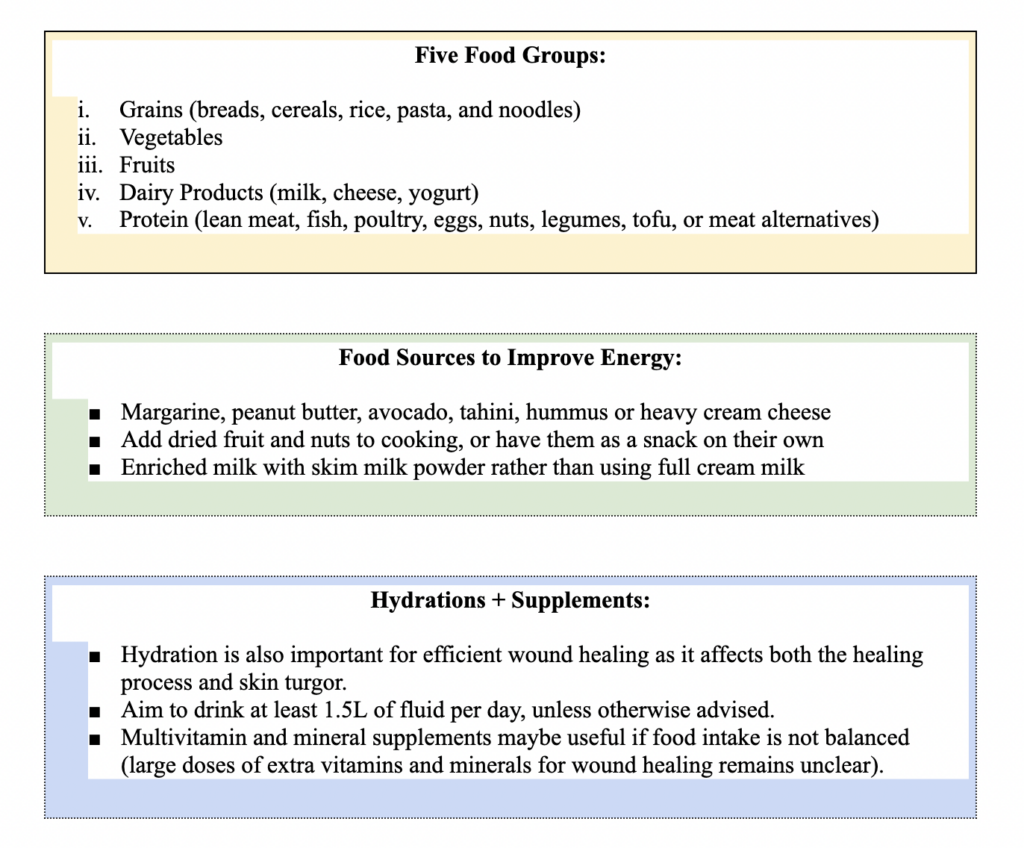
References
Eating well for wound healing – National Institutes of Health. (n.d.). Retrieved March 8, 2022, from https://www.nih.org/documents/Wound-Healing_Nutrition-2021.pdf
Mackay, D., & Miller, A. (2003, December). Nutritional support for wound healing: alternative medicine review. Journal of Clinical Therapeutic. Retrieved March 5, 2022, from https://www.researchgate.net/profile/Alan-Miller-3/publication/8977467_Nutritional_Support_for_Wound_Healing/links/5702a76c08aea09bb1a30144/Nutritional-Support-for-Wound-Healing.pdf
Nutrition tips to improve wound healing. Cleveland Clinic. (2017). Retrieved March 5, 2022, from https://my.clevelandclinic.org/health/articles/11111-nutrition-guidelines-to-improve-wound-healing
2 Comments
Leave a Comment
More To Read
Comparing IP and MCP joint splinting for Trigger Finger
Teo, S. H., Ng D. C., Wong, Y.K.(2018). Effectiveness of proximal interphalangeal joint blocking orthosis vs metacarpophalangeal joint blocking orthosis in trigger digit: A randomized clinical trial. Journal of Hand Therapy, 1-7. The Skinny- This study compared PIP joint immobilization via an Oval-8TM with a custom MCP blocking orthosis in the treatment of trigger finger. …
Read MoreTHE SENSITIVITY AND SPECIFICITY OF ULTRASOUND FOR THE DIAGNOSIS OF CARPAL TUNNEL SYNDROME: A META-ANALYSIS
Fowler, J. R., Gaughan J. P., & Ilyas, A.M. (2011). The sensitivity and specificity of ultrasound for the diagnosis of carpal tunnel syndrome: A meta-analysis. Clinical Orthopedics and Related Research, 469(4), 1089-1094. The Skinny –The authors sought out to determine the sensitivity and specificity of ultrasound therapy for the diagnosis of carpal tunnel syndrome using…
Read MoreIFC vs TENS: Electrical Stimulation for Pain and Swelling
In this article we’re looking at the difference between Inferential Current versus Transcutaneous Electric Nerve Stimulation (IFC vs TENS). Transcutaneous Electric Nerve Stimulation (TENS) TENS variations are often described by their technical characteristics: high frequency, low intensity (conventional TENS) or low frequency, high intensity (acupuncture-like TENS, AL-TENS) (Walsh et al., 2009). How TENS Addresses Pain:…
Read MoreSign-up to Get Updates Straight to Your Inbox!
Sign up with us and we will send you regular blog posts on everything hand therapy, notices every time we upload new videos and tutorials, along with handout, protocols, and other useful information.


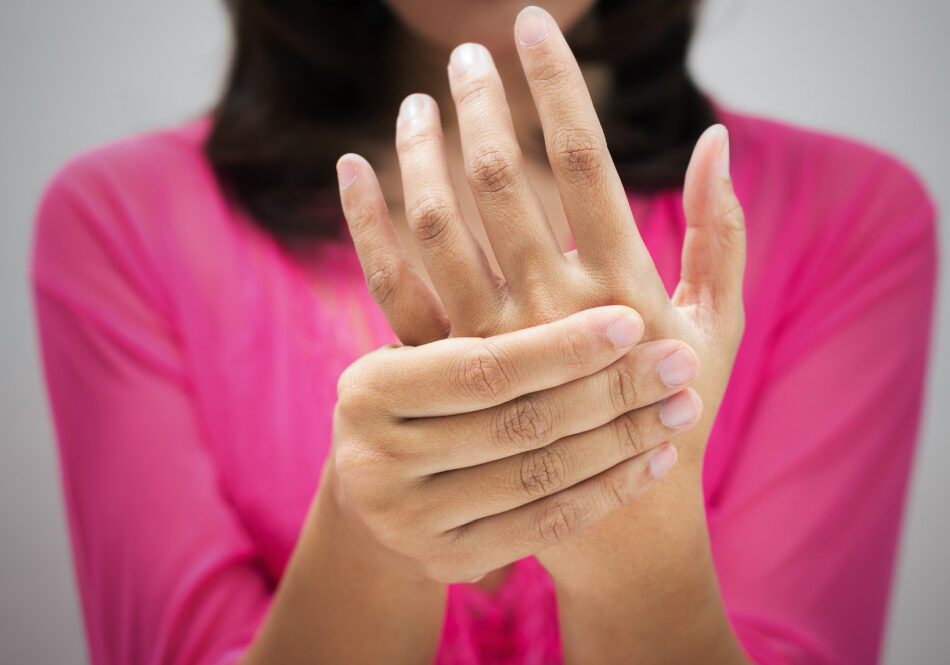
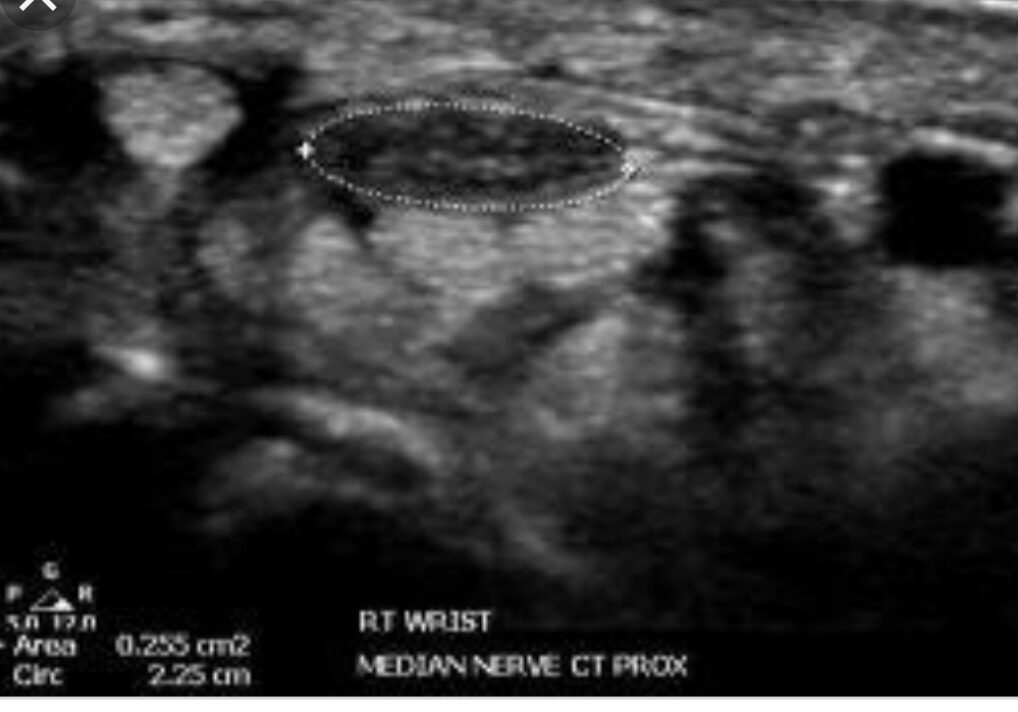
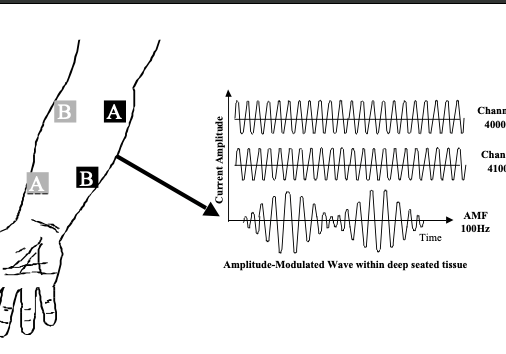

Very informative, well written and concise. Great topic.
Very informative and useful, we all should be cognizant of how nutrition affects healing.